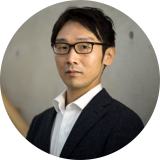SEA PROJECT Event2
Performance and Talk by Heri Dono
+ Report of the SEA PROJECT Research in Indonesia Part 2: Report of the SEA PROJECT Presentation 2
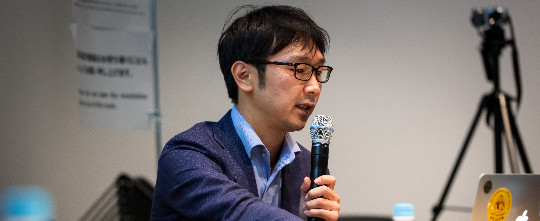
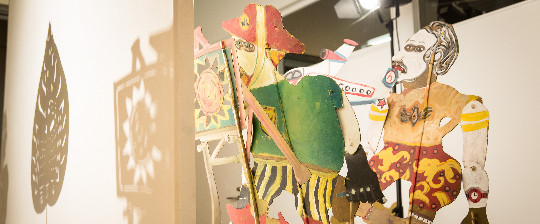
Memorandum on Indonesian Contemporary Art
I would like to speak today about two artists in particular who have been active since the 1980s and ’90s: FX Harsono and Mella Jaarsma.
With regards to the history of Indonesia’s art scene, as Ms. Kataoka mentioned, there was the Jakarta Art Show in 1974 that served as the predecessor for the Jakarta Biennale. However, at the 1974 Art Show, there was an extremely large number of works that retained the formal conditions of paintings and sculptures which left the more radical or cutting-edge artists feeling dissatisfied. Thus, in the same year, a protest called the Black December took place where protestors staged an art show as a funeral, delivering eulogies and offering flowers. Consisting mostly of the members of that movement, from 1975 onward, a movement called the Indonesia New Art Movement(Gerakan Seni Rupa Baru)emerged, and one of the figures who played a particularly central role and participated in these shows from the early days was Mr. Harsono whom we interviewed during our research. As a Chinese-Indonesian based in Indonesia, he incorporates his [ethnic] lineage—being of Chinese descent—into his own art practice.
For example, Pilgrimage to History (2013). After the Japanese Occupation, many Chinese became victims of Indonesia’s path toward independence; victims who are now buried in shared graves that serve as monuments. Harsono created Pilgrimage to History using frottage*, transferring the uneven surface of these graves onto a white cloth and highlighting the names of the dead. The act of recording is one of the important themes in Harsono’s works, so he also records these shared gravesites by registering them on Google Map.
Another of his recent works is Writing in the Rain(2011) which shows him having difficulty writing his name [on a transparent wall] as the rain repeatedly washes the ink away. As part of [Indonesia’s] stance on nationality and the Suharto administration’s Chinese Assimilation Policy, Chinese-Indonesians were forced to change their Chinese names to Indonesian ones. Harsono himself gave up his Chinese name at the age of eighteen and had an Indonesian passport issued. This work is motivated by his experience of this. Hu Fang Wen, Harsono’s Chinese name, is the only thing he can write in Chinese, thus he writes those characters repeatedly.
Also, from about four years ago, Harsono has been working on a project called “EXI(S)T” at a place named Dia.Lo.Gue which was set up to nurture not only artists but also curators. Indonesia has a limited number of public cultural facilities compared to Japan, so there are not many curators either. According to Harsono, “Universities hardly offer that kind of [curatorial] education; no one teaches you what you should do to become a curator.” So this project was launched so that experienced artists like Harsono could help to train curators.
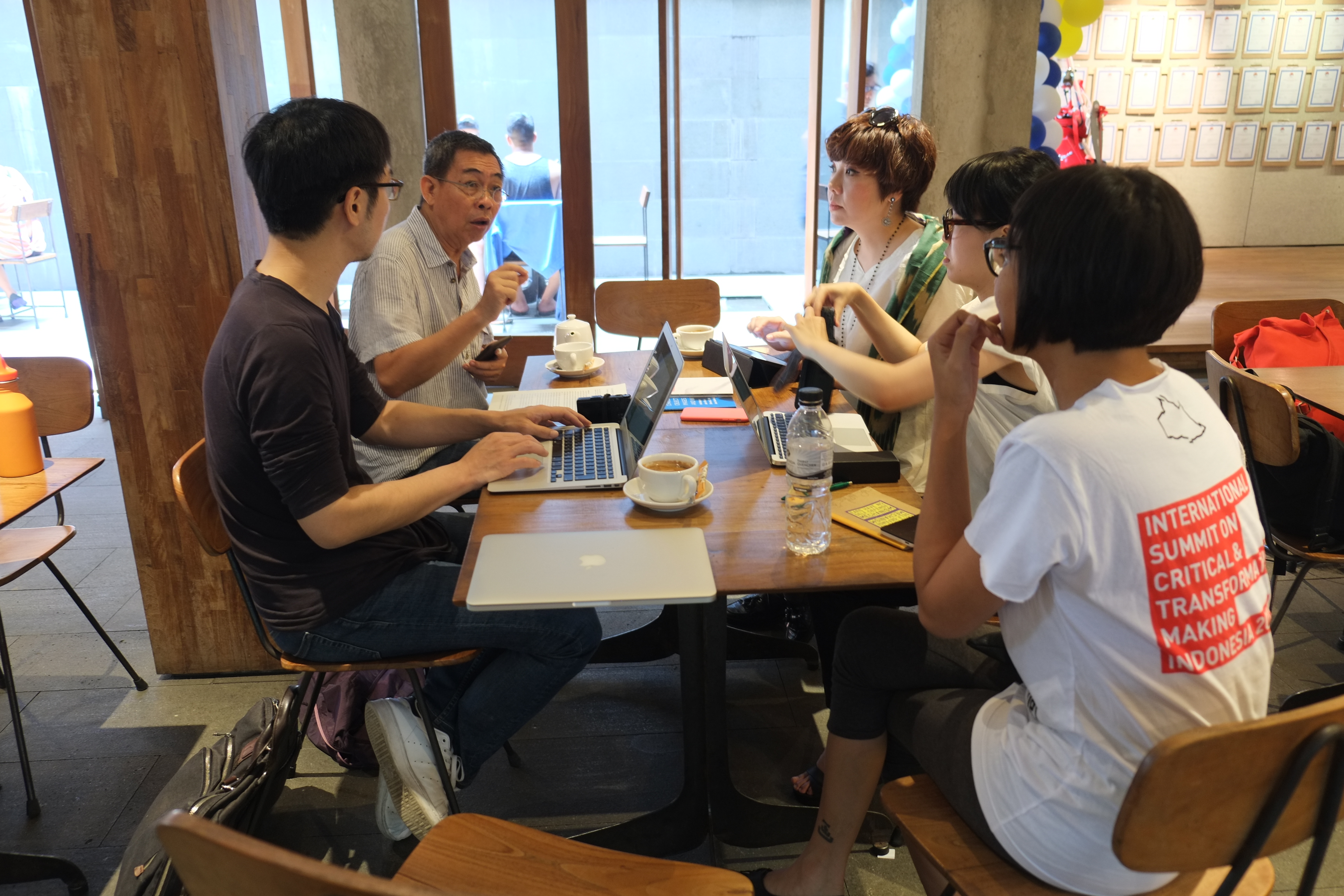
Moving onto Mella Jaarsma; Jaarsma was born in the Netherlands and, after marrying an Indonesian artist, she is now active in Indonesia. She is an artist interested in the social problems that lie at the peripheries of Indonesia’s highly diversified society; problems such as those who are excluded due to certain discriminations against [ethnic] identities, and other social incidents and phenomena that are relatively marginalized.
One such example is High Tea(2014). Tea, as you know, was brought to Europe at the beginning of the seventeenth century by the East India Company. At the time, the best-quality tea leaves made in West Java, the leading production area, were all exported to Europe and the local people were left with low-quality tea. High Tea addresses and criticizes this fact.
Another signature work of Jaarsma is an installation series using the skin of creatures such as animals and reptiles. The title is Lugang Buaya/ (Crocodile’s Pit,2014). In the September 30 Movement, the military coup d’état attempt that occurred in 1965, six military officers were killed and their bodies were abandoned in a well in the Lugang Buaya village located in the suburbs of Jakarta. Lugang Buaya means “alligator hole.” By using the skin of an alligator which literally refers to the name of the village where this incident took place, Jaarsma jars people’s memory about the incident and demands them to reconsider it. Clothing a guest with this alligator-skin costume, she filmed an interview with the guest about the incident and exhibited it as a video work.
Jaarsma is one of the founders of the Cemeti Art House, which was also mentioned in Ms. Kataoka’s talk earlier, and she puts together about ten art exhibits every year. Separately established from this exhibition category is IVAA, the Indonesia Visual Arts Archive. Around 2000, a new form of contemporary art emerged that involved practices that do not leave a work behind in the form of an item or object. This is what we call today “socially engaged art” or “performance.” The IVAA began archiving such practices out of the need to historicize these events and record them in the form of documents.
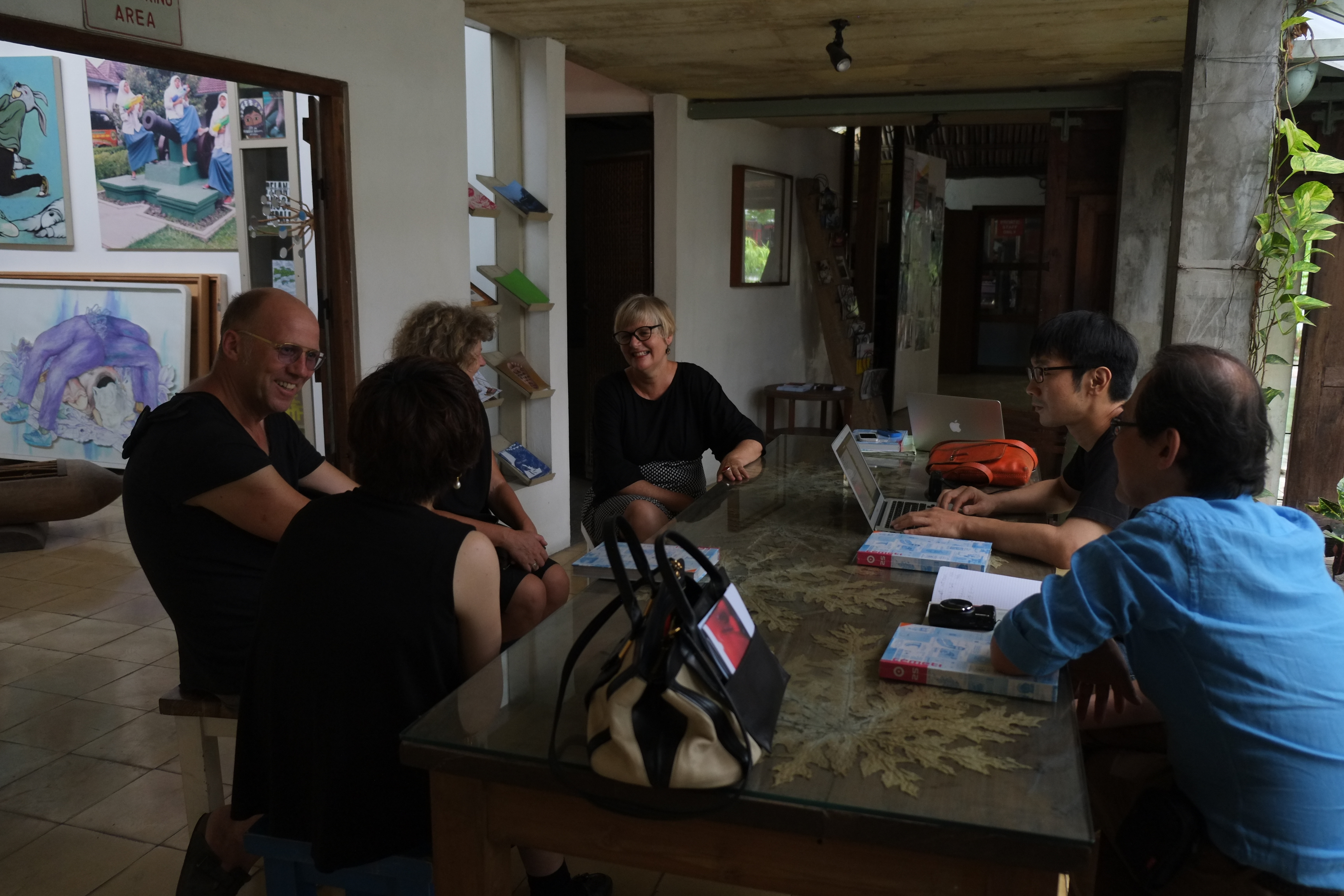
*Frottage: A technique of transferring the surface texture of an object by placing paper on top and rubbing over it with instruments such as a pencil.
Photo: Shinichiro Mikuriya
Photo Courtesy: Mori Art Museum
